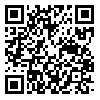Volume 12, Issue 54 (vol. 12, no. 54 2023)
2023, 12(54): 91-104 |
Back to browse issues page
1- Department of Horticulture, Faculty of Agriculture and Natural Resources, University of Mohaghegh Ardabili, Ardabil, Iran
2- Department of Horticulture, Faculty of Agriculture and Natural Resources, University of Mohaghegh Ardabili, Ardabil, Iran ,aestaji@yahoo.com
3- Lecturer, Department of Agriculture, Faculty of sciences, University of Gonabad
2- Department of Horticulture, Faculty of Agriculture and Natural Resources, University of Mohaghegh Ardabili, Ardabil, Iran ,
3- Lecturer, Department of Agriculture, Faculty of sciences, University of Gonabad
Abstract: (1146 Views)
Medicinal plants contain valuable active compounds that are produced in limited quantities under natural conditions, so the use of methods such as tissue culture and stimulant materials is useful to produce more secondary metabolites in medicinal plants. In this study, the effects of methyl jasmonate and LED lights as two elicitors on physiologic and secondary metabolites in the roots of 30-day-old licorice seedlings in MS media were investigated. In this study, concentrations of zero, 0.2, 0.5, 1 and 2 μM methyl jasmonate as well as blue, red and blue+red light treatments, were used in three replications in a completely randomized design. The results showed that flavonoid content at wavelengths of 300 nm at a concentration of 1 μM methyljasmonate showed a significant increase compared to the control. According to results, the amount of phenolic compounds in methyl jasmonate treatment increased at a concentration of 1 μM and in blue light treatment. The highest activity of phenylalanine ammonialyase was observed in blue light, but the greatest amount of glycyrrhizin (12.10 µg/g FW) was recognized in red light treatment. Also, red light significantly increased the growth and proliferation of plants compared to other treatments. In general, it can be concluded that the use of stimulants such as methyl jasmonate and red and blue lights increases the amount of secondary metabolites in medicinal plants.
Article number: 6
Keywords: Blue and red light, Licorice (Glyccyrhiza glabra L.), Methyl jasmonate, Tissue culture, Secondary metabolite
Type of Study: Research |
Subject:
Plant Growth Regulators
Received: 2022/05/6 | Accepted: 2022/10/11 | Published: 2023/07/19
Received: 2022/05/6 | Accepted: 2022/10/11 | Published: 2023/07/19
| Rights and permissions | |
 | This work is licensed under a Creative Commons Attribution-NonCommercial 4.0 International License. |




